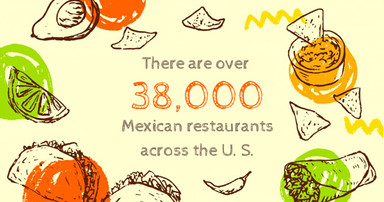Jul 2nd 2018
Food Customs That You'll Be Glad You Know Before Traveling Abroad
The United States is a culinary melting pot. We have it all here. Interestingly enough, there are over 38,000 Mexican restaurants across the United States. More than Italian kitchens, Chinese eateries, chicken rotisseries, and seafood places. Beyond meat cutting machines and commercial grade restaurant equipment, eating began as a very family oriented practice.
What we don't generally have to worry about is the food and culinary traditions many of these cultures are associated with over the world. This has, unfortunately, made American culinary travelers a little ignorant when eating internationally. Food customs are important to cultural awareness and whilst traveling abroad, it's polite to remember your manners and practice the customs of the places you're traveling. We've put together some food faux pas you're probably unfamiliar with.
- Empty plate or no? In the United States we're familiar with cleaning our plates (eating everything on them) at meals, something encouraged from childhood. In India and Japan, it's the same deal, cleaning your plate shows that you've enjoyed the meal immensely. In China, however, it's impolite and signals to the host that you weren't fed enough.
- Look ma, no hands! Eating with your hands in the Middle East and India is common, but the difference between right and left is paramount. The right hand is reserved for eating, while the left is reserved for personal sanitary reasons and eating with it hugely taboo.
- A fork stuck in the road: Forks and spoons are common eating utensils, but in Thailand, it's frowned upon to physically eat food with your fork. The fork is to be used to put food into the spoon, then eaten with the spoon. Spoons, forever.
- Slurp it up: Table manners in the United States don't condone slurping food. However, in Japan, slurping noodles loudly at the dinner table is perfectly fine. In fact, it's encouraged as a way to eat noodles quickly while they're still nice and hot.
Using a meat cutting machine to process proteins or electric meat processors for cutting meat or grinding meat is a part of the industry as it has grown into a booming business. Remembering the personal processes attached to the culture of any cuisine is important to understanding both facets more fully.
Before you travel or eat as a guest somewhere, think about and reflect on food customs that you may come across. Ask questions, be polite, and enjoy your meal.

